Vancouver’s MOA Showcases Rare Early Salish Weavings Gathered from Around the World
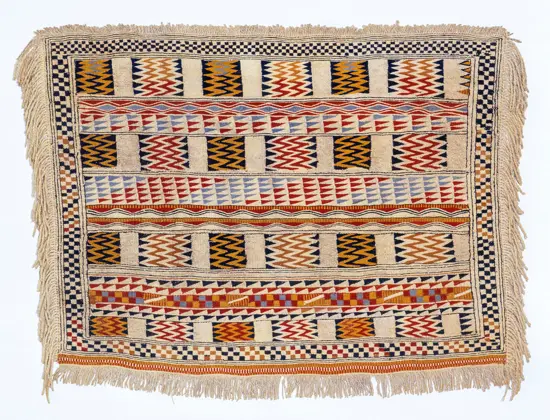
When I walk into the space of the Museum of Anthropology’s newest exhibition, I feel the sacred nature of what has been assembled within it.
The Fabric of Our Land: Salish Weaving is an unforgettable and moving gathering of Salish blankets and weavings, many that have come from far off museums in Europe and the United States.
From now until April 15, 2018, the Museum of Anthropology (MOA) at UBC presents a stunningly impressive exhibition, The Fabric of Our Land: Salish Weaving, that marks the collaborative work of MOA curator Susan Rowley and Salish weavers.
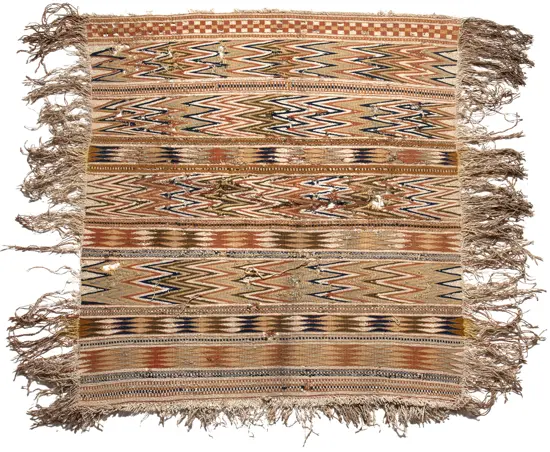
collected prior to 1828
Rowley and master weaver Debra Sparrow provided a tour of The Fabric of Our Land and talked about the inspiration for the exhibition. Sparrow’s sister Wendy Grant John, Musqueam Councillor and master weaver, made a request to the MOA about the possibility of bringing dispersed Salish blankets home for a visit after viewing some at the Smithsonian in Washington, DC. The current exhibition marks the realization of her dream.
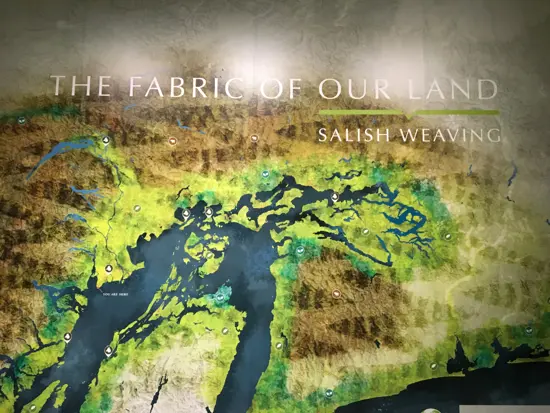
collected prior to 1828
Rowley consulted Salish weavers at various community meetings and asked them to select which blankets from overseas they most wanted to include in the upcoming exhibition. The MOA then approached these institutions (eg The National Museum of Finland, the Perth Museum in Scotland, the Pitt-Rivers Museum in England, the Harvard Peabody Museum, and the Smithsonian Institution’s National Museum of Natural History) about acquiring these blankets on loan, and they all readily agreed.
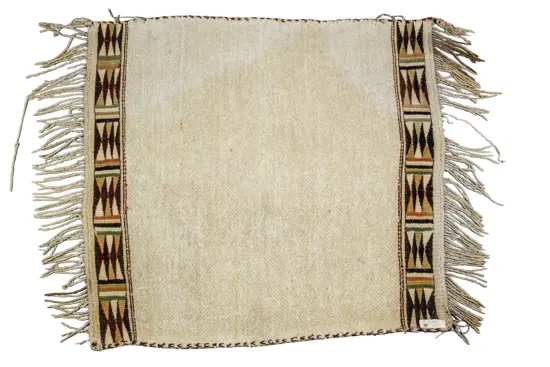
collected prior to 1828
The showcased blankets, which range in age from the early 1800s to the present, are steeped in a complex and painful history related to colonialism, trade, and attempted cultural erasure. The blankets’ exact origins are largely unknown, although it is presumed that many were acquired by these museums after early traders and explorers acquired them in their travels. The territories from which these blankets originated include Puget Sound, southeastern Vancouver Island, the Sunshine Coast, the Lower Mainland, and the Fraser Canyon. The exhibition also features weavings from the MOA’s own collection (late 1800s to the present), as well as blankets on loan from contemporary weavers.
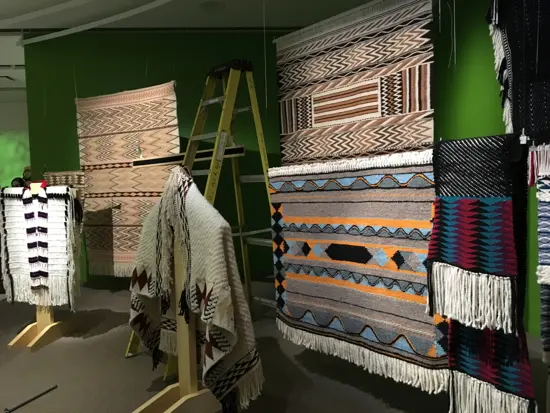
collected prior to 1828
Sparrow talked about how much of the knowledge of how to make Salish blankets was lost through oppressive practices, such as residential schools and the banning of ceremonies, that disrupted the cultural transmission so necessary to keep the tradition alive. She and other contemporary Salish weavers had no elders or guidance for bringing the practice back to life. The exhibition will therefore be a vital way for her community to actively get back in touch with these lost blankets and their techniques, as well as their cultural resonance.
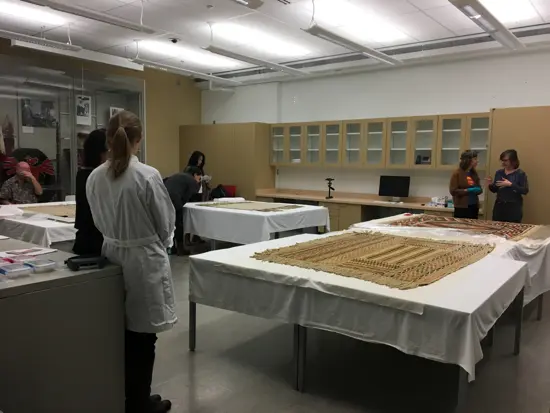
collected prior to 1828
The blankets themselves are breathtaking in their intricacy, attesting to the skill and resourcefulness of Salish weavers over the span of two hundred years or more. The materials used include plant fibres, bird down, animal skin, woolly dog hair, goat hair, hemp, local and imported dyes, human hair, and sheep wool.
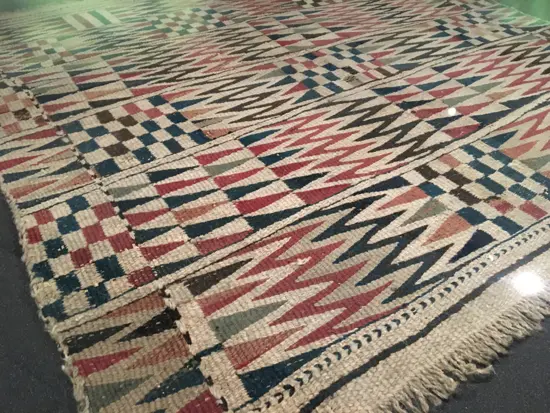
collected prior to 1828
“I am in awe of what they were accomplishing pre-contact,” said Sparrow. She continued by emphasizing the spiritual and cultural significance of these blankets and weavings: “They have reawakened who we are as a people. They are the foundation of why we exist.” The pieces represent an intricate bringing together of ceremonial ritual, economic function, the relationship with the natural world and its creatures, and symbolic meaning in terms of family protection and wealth. To have them collected in one space is a rare opportunity to appreciate and celebrate the rich heritage and continued vibrancy and creativity of the Salish peoples.
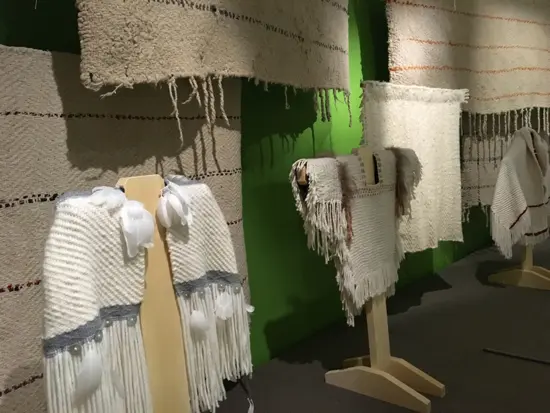
collected prior to 1828
The exhibition will have an important interactive component, with Sparrow demonstrating weaving on an old loom from the MOA’s collection. There will also be contemporary looms for learning and practicing weaving techniques.
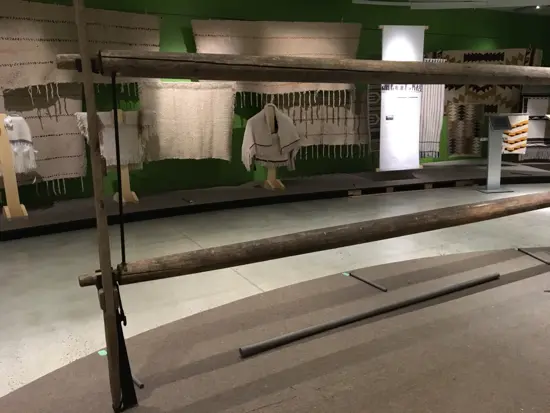
collected prior to 1828
Further information can be found on-line.

Craving
culture?
Get
ideas.